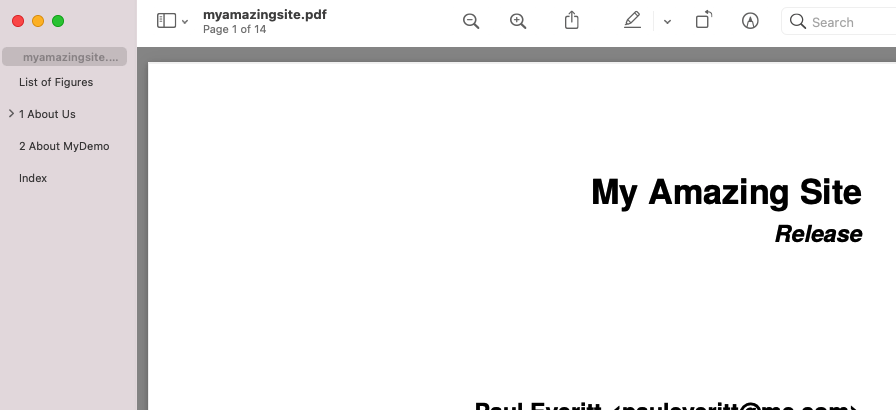Advanced Usage
MyST has a lot more to offer than just Markdown-in-Sphinx.
If you've been around Sphinx for a while, you know: it has some powerful machinery. MyST adds some power of its own. Let's look at a few more advanced features in each that can help on larger websites.
Substitutions
Sometimes you have the same fragment of content appearing across your site: snippets of text and/or markup. reST has subsitutions with various ways to get them into documents. There's a Sphinx add-on which provides more power.
MyST also allows substitutions.
First, enable them in myst_enable_extensions in the conf.py file:
myst_enable_extensions = [
"colon_fence",
"substitution",
]
Next, edit about_us.md to add some frontmatter -- a title but also a substitution named snippet.
Then add the usage of the snippet at the top of the document:
---
title: Welcome to the Site
substitutions:
snippet: "I'm a **substitution**"
---
# About Us
Let's see the `snippet`:
When the file is saved and Sphinx rebuilds, we see the snippet, rendered from Markdown to HTML:

Of course, this snippet is only re-usable in this file.
If we want to re-use the snippet across the whole site, move it to conf.py:
myst_substitutions = {
"snippet": "I'm a **substitution**"
}
As the MyST docs show, there's a lot more that can be done with snippets:
- Re-use roles and directives as well as Markdown
- Insert values using Jinja2 expressions
- Combine with filters to transform
Comments
It seems simple, but it's frequently important: you can hide blocks of Markdown content using comments. The Markdown that is commented out will then be omitted from being parsed into the document.
As an example, imagine you have an admonition directive, using the optional colon syntax.
You'd like to temporarily hide it from getting generated.
You can comment it out with leading % symbols:
% :::{note}
% This text is **standard** _Markdown_
% :::
Multi-format output has long been one of Sphinx's killer features. Want to produce HTML and PDF? No problem.
However, that meant going through LaTeX. More recently, rinotype is being used to produce structured PDF documents. As this Medium tutorial explains, "Rinohtype, paired with Sphinx, offers a modern alternative to LaTeX."
Let's start by adding rinohtype to our requirements.txt file:
sphinx
livereload
myst-parser
rinohtype
Then, install the requirements:
.venv/bin/pip install -r requirements.txt
That's it...we can now use rinoh as a Sphinx build target:
make rinoh
open _build/rinoh/myamazingsite.pdf
As you can see, the PDF has text, images, links, and a table of contents:

PDF is great, but it isn't the only target. Sphinx has other builders as well. You can even make your own builder.
Blogging
Many websites have a blog, where you can create posts and draft posts, then organize in rich ways by tags. These posts are then processed into an XML file which is sent to special RSS/Atom clients.
For Sphinx, the ABlog package provides such features. ABlog has been around a while and thus has quite a number of features, such as archive pages, custom sidebars, and commenting integration. In fact, it recently started supporting -- MyST!
Conclusion
That wraps up our tutorial series on static websites with Sphinx and Markdown. There are many other topics to cover -- for example, hosting at Read the Docs as well as other parts of the ecosystem. For now, we've covered the basics, and shown that you can indeed use Sphinx for regular sites and Markdown as the authoring language.
